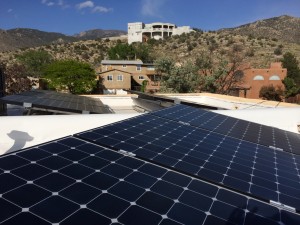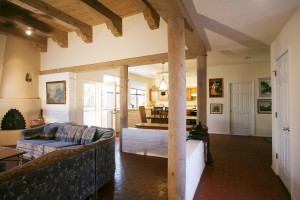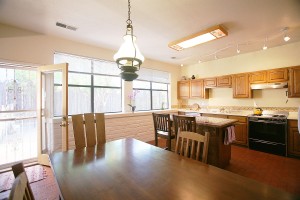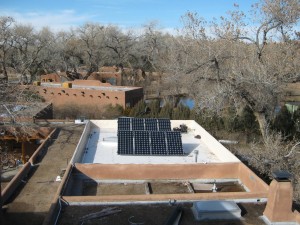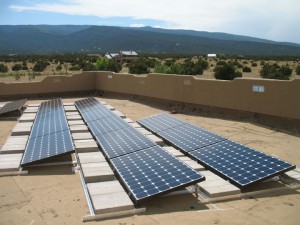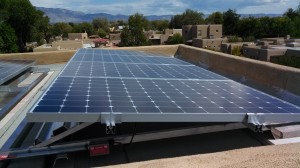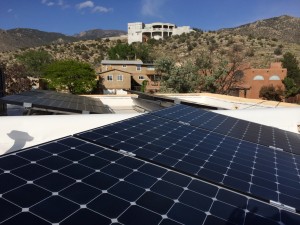 The Sugar Team recently had the opportunity to sit down with two representatives from Positive Energy Solar, New Mexico’s leading provider of solar panels to discuss how to get into the business, the installation process, the evolution and future of the technology, tax and other economic incentives for acquiring panels and finally, the benefits of working with Positive Energy Solar.
The Sugar Team recently had the opportunity to sit down with two representatives from Positive Energy Solar, New Mexico’s leading provider of solar panels to discuss how to get into the business, the installation process, the evolution and future of the technology, tax and other economic incentives for acquiring panels and finally, the benefits of working with Positive Energy Solar.
Cody Simpson, Field Manager and New Mexico Licensed Commercial and Residential Journeymen Electrician provides the hands-on technical perspective. Working on electrical right out of high school, specializing in residential and commercial wiring, he decided to work for a company that not only was lucrative, but also strived to better the community around him.
Julian Singer-Corbin, Technical Sales Adviser provides the business, community and historical perspective. With a background running other organizations that have their heart in the right place, Julian feels passionate about sustainability and sustainable living practices so that the human experience can perpetuate into the future.
The Sugar Team: For someone who wants to get involved in the installation-side of the business, what kind of background do they need? Do they need to be a licensed Contractor, licensed Electrician, Plumber etc.? What would be recommendable for someone of that nature?
Cody Simpson: You’re looking for someone with the drive, and someone that you can count on as a
person to do work for you and to do it right. That means that they don’t have to have electrical experience, but they have to be willing to learn. To take classes and to better themselves in a career they want to be in. This isn’t just a job for most people. It’s a career. Those are the kinds of people we look for when we’re trying to find installers.
ST: In general terms, how has solar power evolved since the 70’s?
Julian Singer-Corbin: Solar panels make a lot more power than they used to. The way that we apply those technologies to homes and businesses has become incredibly easier, less expensive, and much safer. We have found a way to retrofit solar into our existing infrastructure in a responsible and safe way. So now, you end up spending far less for something that creates far more power, lasts far longer and also has a way less detriment to any structure that it’s attached to.
ST: So, the old passive solar water heaters from the 70’s… those would damage the structure of whatever it is they were attached to?
Julian: Well, I think they would damage the aesthetic of the home. You would have this huge box sitting up there.
Cody: They definitely were not good looking!
ST: And were they efficient?
Julian: Well, they don’t do what we do. They are a different technology. We’re comparing cars and kayaks here. We sell photovoltaics, solar-electric systems. They did not evolve from nor are they very related to passive solar heat or solar hot water which are two different industries that have two different histories and paths.
ST: What does “photovoltaic” mean?
Julian: It’s a process discovered by Albert Einstein. Photovoltaics is the physical reaction between sunlight and silicon. Silicon is the second most abundant resource on our Planet, and when it’s contacted by sunlight the physical reaction at the atomic level is that silicon gives off a shower of electrons. We found a way through study and development to harness the flow of electrons. The definition of “electricity” is the flow of electrons through any given material. So, we found a naturally occurring physical reaction that produces a shower of electrons without having to burn anything or combust anything. And we string that reaction together until we get into a high enough flow or voltage to be able to power the things we need to.
ST: And so, the old system is not photovoltaic?
Julian: No, the big boxes with a fan in it is essentially a sunroom on your house. You have a little switch inside and you turn it on. Sunlight will just heat up air in that box and then a fan running from a motor that’s powered by your utility will just blow hot air into your house, so that your heater doesn’t have to work as hard to keep the ambient temperature up and not turn up your thermostat.
ST: Is now a good time for installing solar panels?
Cody: I would say it’s a great time! With the price being as low as it is per watt right now, with the technology being as efficient as it is, and with the Federal and State tax credits starting to dwindle away, right now is a great time to look into getting solar sooner than later. If we could get every house in New Mexico to install solar panels on I would love it.
ST: Tell me about these tax credits. What are they? How long do they last for? How often do they expire? How does that work?
Julian: The Federal Income Tax Credit was created by something called the American Renewables and Recovery Reinvestment Act. This was from 2006. George W. Bush was in office, and there was a bill passed by Congress to subsidize the renewable energy industries, primarily wind and solar electric. In that Bill it states that anyone who privately invests in solar power may claim up to 30% of the price they invested in it back in the form of a federal income tax credit. So, you purchase a system. Let’s say this year. And let’s say—I’ll make up random numbers—you pay $50,000 you spend on a solar array for a big mansion you own and it produces a lot of power for you so you don’t have an electric bill any more. Next year when you file your taxes you would be entitled to a $15,000 income tax credit. The State of New Mexico in 2009 added a similar credit They added a 10% credit, so now anyone in New Mexico purchasing a solar array can expect a 40% tax credit—30% in the Federal and 10% in the State. They just expire once, and they’re set to expire very soon. So, if a system is installed and paid in full before the end of the calendar year then you qualify for that year’s tax liability to be effected by the Income Tax Credit. So, the Federal was set to expire December 31st of 2016. It is still set to do so. There hasn’t been any changes to it. The state is also set to expire the same date. However, the State has a three-million-dollar account that they are allowed to divvy out each year and that account—when it expires—is gone. So, this year the 2015 state tax credit ran out in September and everyone from September through December—and there are quite a few of them—are claiming state tax credit that will be pulling from next year’s account. And next year’s supposed to be the highest volume solar year in history as far as solar electric in the United States. Specifically, because of our tax credits. With that volume of people going forward we expect the State’s tax credits to run out sometime in the middle of the year. We expect that count to be at “zero.” To answer your earlier question, I don’t think there has been a better time to go solar then between now and next Summer.
ST: In general, there’s a belief that installing solar panels is very expensive. Is that true?
Julian: Sure! I think solar panels are the probably the third largest investment people make in their lives next to purchasing a home or purchasing a car. For some folks solar ends up being equivalent to what they spent on a car depending on how you buy. However, solar panels appreciate in value.
ST: They appreciate in value?!
Julian: Yes. The reason is because solar panels produce energy for a very long time and the price of energy from the utility goes in one direction—it’s not getting cheaper—and so, if you have something that’s taking your energy bill out this year…let’s say it saves you $1,000 this year that you didn’t pay to PNM. Next year that would save you $1,150. The year after that it would save you $1,300. The year after that it would save you maybe $1,500. The price of energy goes up. Over the last thirty years it has gone up an average of 6% annually. So, that’s appreciation in value. The system that’s keeping you from paying a cost is actually becoming more valuable to you monetarily over time. In contrast, cars immediately devalue when you drive them off the lot. Very soon in the United States especially we are going to deal with a crisis of sorts. There are many more people living on our electric grid than we are built to handle and there’s a lot of updating that it needs that the utilities have been putting off because it is extremely expensive and it’s their mandate. When they need to update it and replace these systems it’s going to fall on the rate payers. And when that price starts to skyrocket you are going to see a solar array save you a lot of money. So, as an outward investment—as the loan you take out—dollar amount just compared to something else yes, it’s expensive. However, if you didn’t go solar it would be more expensive to pay your power bill . And I think that’s the argument for it.
ST: So, how much do solar panels cost?
Julian: Anywhere between 10 and sixty thousand dollars. Depending on the type of solar you buy, it can be anywhere between $3 and $5 dollars a watt. Price per watt is a little bit of a difficult thing. There are systems out there…let’s say if you have 1000 watts of a Sun Power system and 1000 watts of a Kyocera system and they’re electrically rated the same, the Sun Power system still produces more energy which would mean that each watt was more valuable. So, if you were trying to get them to be sold for the same per watt it would be disparate. Different systems produce different amounts of power. So, when we come in to size a system our goal is to get rid of your power bill. However, someone with a 5000 square foot home with a pool with a monthly power bill of $750 is going to pay much more for a solar array than someone with a 1200 square foot home without a pool with a $35 power bill.
ST: How do you see the future of solar energy?
Cody: I would be really interested in taking a look at the AC [alternate current] modules that are 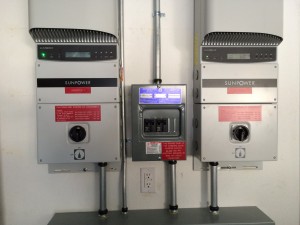 coming out on the market now. A lot of the modules we use nowadays are DC [direct current] modules which means it takes a DC current from the rooftop or from a ground mount back to an inverter. An AC panel would have a built in inverter (a lot smaller). But for another cost, which we are going to be looking at as well. I believe AC panels is the future, because it’s a lot safer. DC is dangerous, and you can’t really turn it off. We use AC for everything in our life right now. Anything you plug into pretty much—except for a cigarette lighter in your car—is AC.
coming out on the market now. A lot of the modules we use nowadays are DC [direct current] modules which means it takes a DC current from the rooftop or from a ground mount back to an inverter. An AC panel would have a built in inverter (a lot smaller). But for another cost, which we are going to be looking at as well. I believe AC panels is the future, because it’s a lot safer. DC is dangerous, and you can’t really turn it off. We use AC for everything in our life right now. Anything you plug into pretty much—except for a cigarette lighter in your car—is AC.
Julian: I don’t have a crystal ball, but I agree. We’re trending toward a unit that is producing the type of power that we use. The future is when the battery industry catches up with solar panels which I think will happen in 5-10 years. The folks over at Solar City—the solar panels that Positive Energy Solar carries—Elon Musk and their group are throwing billions of dollars into researching and developing the next way to store energy. Once we figure out a way to efficiently store energy in a smaller space what you are going to get is stand-alone structures that power themselves. We are at the very tip of the iceberg of this revolution, I think. You are going to have a homes and businesses that have the grid as a backup, but they are a closed power system.
ST: Where can solar panels be installed on a home? Do you ever find a configuration for a home where it’s impossible to install solar panels?
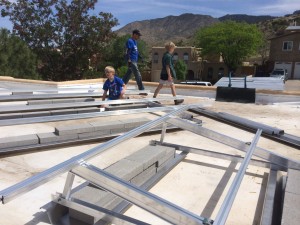 Cody: On no home is it impossible to install solar panels! They can be installed on a roof, on an awning, on the side of your house, or on a ground mount in your yard. Sometimes it will come down to a structural engineer to say that the roof cannot support the load you were going to put on it with the solar panels. In that case we can call in a framer and reframe certain parts of the roof to make it stronger to support that additional weight. Sometimes there’s not enough space on their roof. Well, do they have additional space maybe on a carport? Do they have enough space maybe in their yard for a ground mount? In other words, if there’s a will there’s a way!
Cody: On no home is it impossible to install solar panels! They can be installed on a roof, on an awning, on the side of your house, or on a ground mount in your yard. Sometimes it will come down to a structural engineer to say that the roof cannot support the load you were going to put on it with the solar panels. In that case we can call in a framer and reframe certain parts of the roof to make it stronger to support that additional weight. Sometimes there’s not enough space on their roof. Well, do they have additional space maybe on a carport? Do they have enough space maybe in their yard for a ground mount? In other words, if there’s a will there’s a way!
Julian: However, the one exception is if you live in the woods where the panels didn’t receive direct sunlight.
ST: How long does an installation generally take?
Cody: It depends on the roof. For example, a single-story flat roof typically can be done in a day. Bigger more extravagant roofs with various pitches and parapets, then we’re looking at two to potentially three days. There aren’t too many jobs we can’t get done within a three-day window.
ST: How does Positive Solar Energy differentiate themselves from other local solar panel providers?
Julian: Positive Solar Energy is an employee-owned certified benefits corporation, the largest “B” Corp in New Mexico. What that means is we adhere to 200 points of compliance with an organization called “BCorporation.net” and they vet businesses all over the world for their compliance in how you discard your materials, how you treat your employees, how much time you spend volunteering to help your community—not only volunteering your skills and your time but also volunteering your product—, Positive Energy works closely with Habitat for Humanity to get solar panels on homes they are building to make sure they are more efficient. All of us spend time teaching classes from the Elementary school level all the way up to the collegiate level to make sure that we are doing is fulfilling a triple bottom line: profit, people and planet. We’ve received “Recycling Business of the Year in New Mexico” twice in the last three years and we are a 100% carbon-neutral company so, we are a net-zero business. I think the fact that we are owned and operated out of New Mexico, and have no intention of doing anything otherwise, and have done so for eighteen years shows that we are the experts in our field and will stick around though thick and thin to be there for our customers. We have a 100% customer satisfaction rating on just about every site you can look up. I honestly don’t think you’ll find another solar power company in the United States with a better, more storied track record with better business practices.
Boy, these guys really know their stuff! After talking to Julian and Cody I really am proud to have a company like Positive Energy Solar operating in Albuquerque. Personally, I bought solar panels from Positive two-and-a-half years ago, and am still completely satisfied with their product and customer service. For what it’s worth, I would be more than happy to discuss solar panels, sustainable energy, and the value that photovoltaic panels add to real estate to anyone who drops me a line.
Sincerely,
Sutter Sugar
(505) 850-9977
Sutter@TheSugarTeam.com
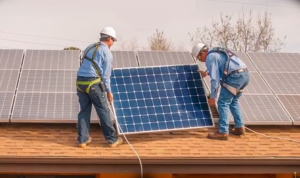
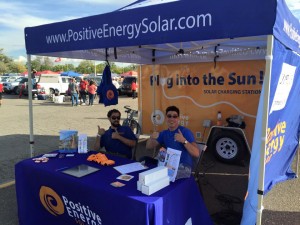
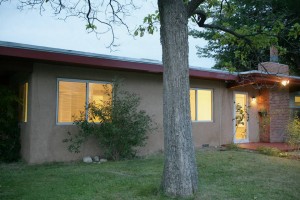



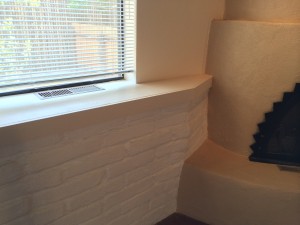
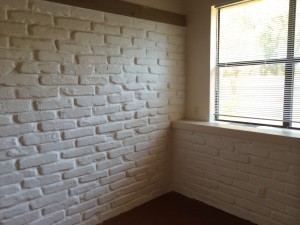
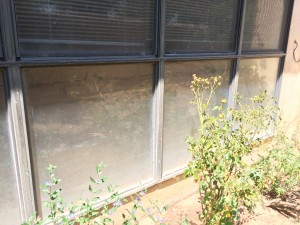


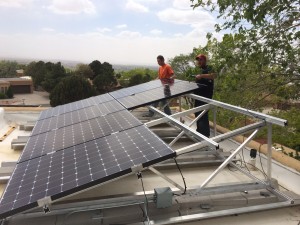 received an energy audit and had numerous evaluations by engineers, and it was determined we would need 30 photovoltaic solar panels or a 9.81 kWh (kilowatt hour) solar system to offset our energy use through the course of the year.
received an energy audit and had numerous evaluations by engineers, and it was determined we would need 30 photovoltaic solar panels or a 9.81 kWh (kilowatt hour) solar system to offset our energy use through the course of the year.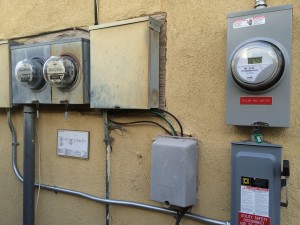 There is nothing more satisfying than watching your electric meter move in reverse. Living here in the Sunbelt where according to the Current Results Website we average 278 sunny days in Albuquerque, it’s no surprise to see a meter connected to a solar system spinning backwards. And because I entered into an eight-year contract with my electric company, their buy-back rate is guaranteed during that period. Of course, there is speculation the rate will go down, but no one knows for sure.
There is nothing more satisfying than watching your electric meter move in reverse. Living here in the Sunbelt where according to the Current Results Website we average 278 sunny days in Albuquerque, it’s no surprise to see a meter connected to a solar system spinning backwards. And because I entered into an eight-year contract with my electric company, their buy-back rate is guaranteed during that period. Of course, there is speculation the rate will go down, but no one knows for sure.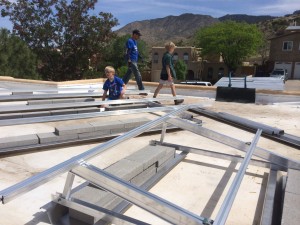 The installation itself only took five days. We have a flat roof so we decided to get a “ballast system.” This is where the frames that sustain the panels are held in place by cinder blocks (rather than bolted in) and are designed to withstand winds up to 120 miles per hour. The result is a gorgeous design with 30 photovoltaic panels feeding into two inverters that convert solar energy into alternative current (AC). This converted energy leads to the Renewable Energy Credit (REC) Meter that, of course ultimately ties into the electric company’s meter.
The installation itself only took five days. We have a flat roof so we decided to get a “ballast system.” This is where the frames that sustain the panels are held in place by cinder blocks (rather than bolted in) and are designed to withstand winds up to 120 miles per hour. The result is a gorgeous design with 30 photovoltaic panels feeding into two inverters that convert solar energy into alternative current (AC). This converted energy leads to the Renewable Energy Credit (REC) Meter that, of course ultimately ties into the electric company’s meter.